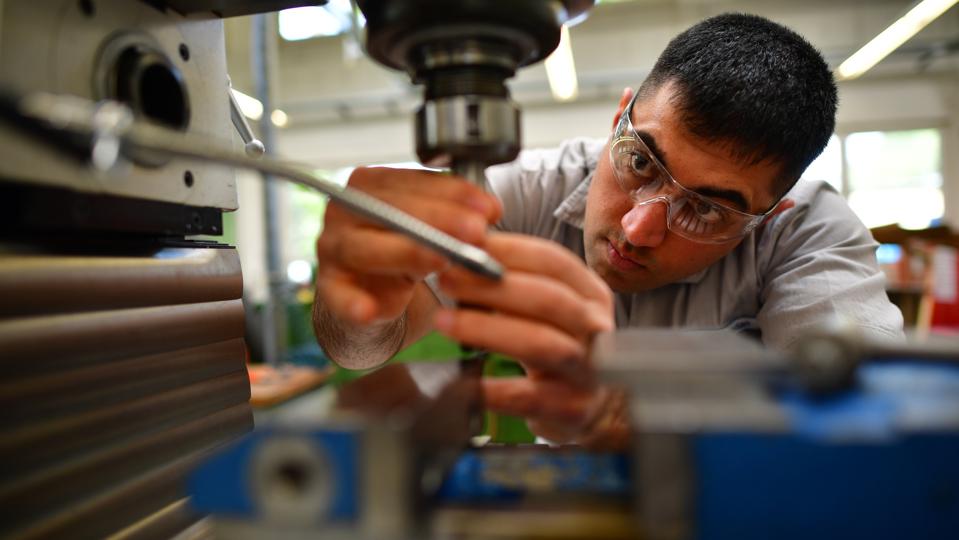As the world increasingly relies on technology, the demand for semiconductors, the building blocks of our digital age, has surged. To meet this demand and reduce dependence on foreign manufacturers, there has been a growing push for more domestic chip-making facilities in the United States. However, a less-considered consequence of this expansion is the potential for increased exposure to per- and polyfluoroalkyl substances (PFAS), also known as “forever chemicals.”
The Semiconductor Boom
Semiconductors, or microchips, have become an essential component of modern life. They power our smartphones, laptops, cars, and countless other devices, enabling the digital age we live in. The COVID-19 pandemic further emphasized the importance of semiconductors as they became integral to remote work, online education, and healthcare solutions.
As the demand for semiconductors has grown, so has the concern about supply chain vulnerabilities, especially the reliance on overseas manufacturing, particularly in Asia. To address these concerns and reduce the risk of disruptions, there has been a concerted effort to expand domestic semiconductor production.
The PFAS Challenge
In this pursuit of technological independence, however, there’s an environmental challenge that warrants attention – the potential increase in PFAS contamination. PFAS are a group of human-made chemicals used for a variety of purposes due to their water- and grease-resistant properties. They are prevalent in everyday items like non-stick cookware, waterproof clothing, and firefighting foam. In addition, they have been used in the manufacturing of semiconductors.
What makes PFAS particularly concerning is their persistence in the environment. They don’t break down naturally, which is why they’re often referred to as “forever chemicals.” These substances can accumulate in water, soil, and even living organisms, posing health and environmental risks.
The Semiconductor Connection
Semiconductor manufacturing relies on ultra-pure water for various processes, and this is where PFAS come into the picture. The chemicals have been used in the past to create a hydrophobic barrier that prevents water from interfering with delicate semiconductor processes. This includes preventing water droplets from causing defects in the microscopic circuits etched onto silicon wafers.
While semiconductor manufacturers have been phasing out PFAS use in recent years due to environmental and health concerns, it’s still crucial to address historical PFAS contamination and ensure that it doesn’t worsen with the anticipated growth of domestic chip-making facilities.
The Environmental Impact
The environmental impact of PFAS contamination is a growing concern. These chemicals have been linked to adverse health effects, including cancer, thyroid disease, and developmental issues. Their persistence in the environment means they can accumulate in water sources, potentially reaching our drinking water.
Some domestic chip manufacturing facilities are located in regions already grappling with PFAS contamination. For example, some sites in the United States, like those in upstate New York and California, have had a history of PFAS use in manufacturing. As the expansion of semiconductor manufacturing continues, the risk of PFAS contamination spreading or worsening in these areas becomes more significant.
Balancing Technological Advancement and Environmental Responsibility
The expansion of domestic chip-making is crucial for reducing the vulnerabilities in the global semiconductor supply chain and enhancing national security. However, this pursuit must be balanced with environmental responsibility.
Here are some key considerations for achieving this balance:
- Phasing Out PFAS: Semiconductor manufacturers must continue to phase out the use of PFAS and adopt alternative materials and processes that are less harmful to the environment. Efforts to develop and implement cleaner manufacturing technologies are vital.
- Environmental Remediation: Facilities with a history of PFAS use must invest in robust environmental remediation efforts. Cleaning up contamination is not only a responsibility but also essential for preventing further environmental damage.
- Regulatory Frameworks: Governments need to establish and enforce stricter regulations regarding the use and disposal of PFAS. This includes setting limits on PFAS concentrations in drinking water and wastewater discharges.
- Investment in Clean Technologies: Governments and industries should invest in research and development of clean technologies that can reduce the environmental impact of semiconductor manufacturing. This includes water recycling, waste reduction, and more sustainable manufacturing practices.
- Public Awareness: Increasing public awareness of PFAS contamination and its consequences is crucial. It can empower communities to advocate for stricter regulations and demand responsible actions from manufacturers.
- Collaboration: Industry collaboration is essential. Semiconductor manufacturers, environmental organizations, and government agencies should work together to find solutions that balance technological advancement with environmental protection.


